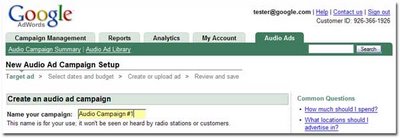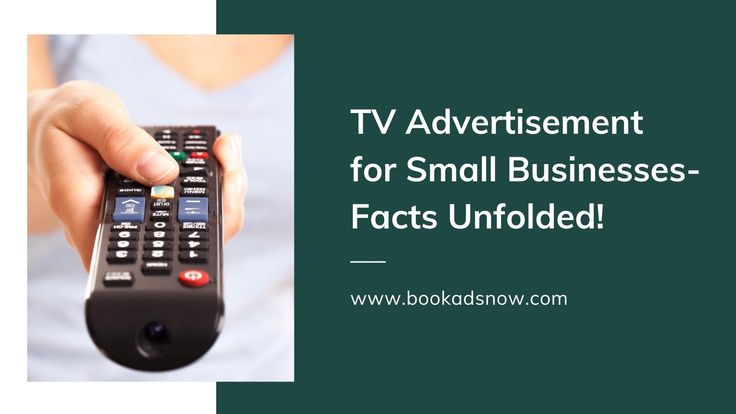
Volkswagen's print ads are funny, self-deprecating, and deeply connected to the times in which they were released. They're also a wonderful example of how advertising can help a company create brand identity or sell a product.
Car ads were big and outrageous in the 1950s & 60s. They were a way that drivers could show off their social status while boasting about the power and style their cars had.
All that was changed by the "Think Small" campaign of Doyle Dane Bernbach (DDB), and Volkswagen. It changed the way people see cars and transformed the industry's approach toward advertising automobiles.
This print ad promoting the Volkswagen Golf is a great example of how a manufacturer can combine classic features with modern technology to create an appealing car. The clever visual trickery makes the Golf appear three-dimensional in a two-dimensional space. It also plays with perspective. The ad also tests the physics of how new technology can be combined with old technology to make a car more enjoyable to drive.

VW's "Drive Bigger", another print ad, shows us a selfish, irritating guy who isn't interested in giving attention enough to other people. The ad also points out that Volkswagen's standard front assist technology can help you avoid head-on collisions.
It is undisputed that Volkswagen's ads in print were among the best. These ads were so popular that they became a social phenomenon. Office workers drew them up on water-coolers, teenagers pasted them on their walls and families followed suit when it was time to buy a new car.
Volkswagen's scandal over diesel emissions quickly became a problem. The company is now selling electric cars and has started to rebuild its image.
In the 1960s, print ads for Volkswagen Beetles were among the most popular in the world. They were full with self-deprecating humor and a sense of humor that reflected the times.
The Beetle's famous "Lemon” print advertisement is a classic and arguably Volkswagen's greatest hit. It's a simple comparison of the Beetle to the Lunar Landing Module, but it's a brilliant use of space and self-deprecation that makes it one of the most memorable print ads of all time.

Volkswagen chose a more simple approach to advertising its vehicles, unlike other car companies who used cartoon characters and performance-oriented spokespeople. To promote the Fastback Sedan compact sedan, which is spacious and easy to park, Volkswagen hired Dustin Hoffman as a commercial actor.
"Think Small" was a breakthrough for the automobile industry. It gave rise to a whole new look in car advertising that has yet to be replicated by any other manufacturer. It was a significant change in the way we saw cars, and it remains a part of Volkswagen's past.
FAQ
What are the basics of print advertising?
Print advertising can be a powerful medium for communicating with customers. Many companies use it to promote products and services. It is designed to attract the attention of the customer.
Print ads are typically one page long and include text, images, logos and other graphics. They may also include sound, animation, video, and hyperlinks.
These are the main types of print ads:
1. Brochures - Large format printed brochures are used to draw people in to stores. They are often filled with colorful images and catchy designs.
2. Catalogues - These are smaller versions of brochures. They are sent to customers who have requested specific information.
3. Flyers - These small pieces of paper are distributed at events like fairs and concerts. They can be given at retail outlets but must be paid for.
4. Posters - These flyers can be larger than the ones you see on the flyer. They can be displayed on fences, walls, or buildings. These are often created with computer software programs to grab the attention of passersby.
5. Direct mail – These are direct mail letters and postcards sent to potential customers. Companies send these out periodically to remind existing customers about their business.
6. Newspaper Ads - These advertisements are found in newspapers and magazines. They can be quite lengthy and often include text as well as images.
What is the cost of advertising on social media?
Social media advertising is expensive if you choose to take this route. You'll be charged monthly according to how long you spend on each platform.
Facebook - $0.10 per 1000 impressions
Twitter - $0.20 Per 1,000 Impressions (if you tweet).
Send out invitations on Linkedin for $0.30 per 1000 impressions
Instagram - $0.50/1000 impressions
Snapchat - $0.60 per 1,000 impressions ($0.40/user)
YouTube - $0.25 Per 1,000 Views
Tumblr - $0.15 per 1,000 impressions for text posts.
Pinterest - $0.05 per 1,000 impressions per month
Google+ - $0.15 to $0.0.20 per 1,000,000 impressions
Tumblr - $0.15- $0.20 per 100,000 impressions
Vimeo - $0.20 to $0.25 per 10,000 impressions
Soundcloud - $0.20 to $0.0.25 per 1 Million Plays
StumbleUpon - $0.20 -$0.25 per 1 billion pageviews
Digg - $0.20 - $0.25 per 1000 diggs
Reddit: $0.20-$0.25 for 1000 comments
Wordpress - $0.20 to-$0.25 for 500 comments
Flickr - $0.20 -- $0.25 per 5,000 photo uploads
What is an ad-campaign?
An advertisement campaign is a series containing advertisements to promote a product. This could also include the entire production of these ads.
The Latin word "to sell" gave rise to the term "ad". Marcus Terentius Varro, 116-27 BC, was the first to use it. He used it as a verb that meant "to make a sales."
Advertising campaigns are usually done by large companies and agencies. There may be many media types involved, including print and television as well as radio, TV, and internet.
Advertising campaigns usually last several months, and they have specific goals. One example is that some campaigns seek to create awareness while others are more focused on increasing sales.
What is an advert buyer?
An advertiser purchases advertising space on TV, radio or print media.
Advertisers are paid for the time that their message will appear.
They are not necessarily looking for the best ad but rather what is most effective at reaching their target market.
The advertiser may have specific demographic information about their potential customers, such as age, gender, income level, marital status, occupation, hobbies, interests, etc.
This data can be used by the advertiser to decide which media is most effective for them. They might decide direct mail is more effective for older people.
Advertisers also consider the competition. Advertisers may choose to place ads near competitors if there are similar businesses in the area.
In addition, advertisers consider the size of their budget and the amount of time they have to spend their money before it expires.
How can I choose my target audience
Begin by talking to yourself and people close to you. If you don't know where to begin, ask yourself, "who am I trying to reach?"
Ask yourself these questions: Who do you consider the most influential in your industry? What are their daily problems? Which are the smartest people working in my field? You can find them online.
Start at the beginning of your business. What motivated you to start your business? What problem solved you for yourself? How did that happen?
These answers will help to identify your ideal clients. These answers will help you understand your ideal clients and what motivates them to buy from you.
For clues on who your competitors cater to, check out their websites and social media pages.
Once you identify your target customers, then you must decide which channels to use to reach these people. A website might be created to reach home buyers, for instance, if your business provides services to agents in real estate.
If you provide software to small businesses, you could develop a blog targeting those companies' owners.
You could also create a Facebook account for teens if you sell clothing. If you own a restaurant, you can set up a twitter account to provide information for parents searching for child-friendly options.
The important thing is that you have many options for getting your message across.
Why use social media for advertising your business?
Social Media Marketing is a way to reach customers on social media platforms such as Facebook and Twitter. You can also target certain groups on these networks with keywords.
This advertising strategy is cost-effective as it costs less than traditional methods to market online. It allows you build strong relationships between your potential and existing clients.
It is easy to use social media to promote your company. You only need a smartphone or computer and internet access.
Radio advertising: What are your options?
Understanding how different media interact with each other is crucial. The most important thing to remember is that all forms of media are complementary rather than competitive.
Radio is best used to complement television advertising. It enhances television by reinforcing important messages and providing additional details.
Radio listeners may find TV commercials too long. Radio ads are generally shorter and less expensive.
Statistics
- It's 100% reliant on your website traffic. (quicksprout.com)
- It collects money from the advertisers, keeps 32% for its role in facilitating the process, and the remaining 68% goes to the publisher (you). (quicksprout.com)
- Advertising's projected distribution for 2017 was 40.4% on TV, 33.3% on digital, 9% on newspapers, 6.9% on magazines, 5.8% outdoor, and 4.3% on radio. (en.wikipedia.org)
- Worldwide spending on advertising in 2015 amounted to an estimated US$529.43 billion. (en.wikipedia.org)
External Links
How To
How to Advertise on Facebook
Facebook is one the most used social media platforms in the world. Facebook is used by around 1 billion people each month, according to estimates. Facebook is now one of the biggest companies in the globe. Facebook's unique features include chat, video call, games, and many other great features. People with Facebook accounts can share photos, post comments, send messages, play games, watch videos, and much more. Facebook allows businesses to advertise. These advertisements can include text ads, banner ads, sponsored stories, promoted posts, and many others.
Facebook advertises in two ways. You can pay for advertising. Other options include free advertising. We'll show you how to do this.
How to advertise Facebook using paid options
Paid advertising on Facebook involves paying Facebook for each impression. You can choose to pay monthly or annual. Facebook offers many types of paid advertising. These include:
Text ads - These look similar to regular text advertisements. They are displayed above or below newsfeed items, but not next to them.
Banner ads are large rectangular images that take up a whole screen page. They are usually used to advertise a particular offer or product.
Promoted Posts: These posts appear at or near the top of your newsfeed. Businesses use promoted posts often to promote products.
Sponsored Stories are stories that have relevant content and appear at the top users' feeds. These stories can be paid for by brands or businesses that want to reach potential clients.
How to promote using free options
Facebook allows you to advertise for free using the same methods that regular Facebook. These include text ads, banner ads, promoted posts, sponsored stories, and other forms.
You cannot, however, create a custom audience with free advertising. You can only target people based on age, gender, location, language, interests, and relationship status.
How to get started advertising on Facebook
If you wish to advertise on Facebook, the first thing you should do is sign up. After that, you'll be able to use all the tools. These are the steps you need to follow in order to create an account.
-
Click "Create new ad set."
-
You can enter a name to create your ad group.
-
You can choose the type advertisement you want to place (textual, image or video).
-
Choose which locations you would like to target.
-
Set the budget amount.
-
Select Facebook Audience Network if you are using it.
-
Click "Next Step."
-
Click "Review & Continue".
-
Before you click "Continue", review your selections.
-
Fill out any additional information.
-
Click "Save Changes."
-
Wait until your ad-campaign has ended before you start your campaign.
-
After your campaign is over, click on "View Ad Statistics".
-
Your campaign's results can be viewed here.
-
Keep going with steps 13-16, until you find the perfect settings for your company.
-
Advertise now!